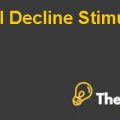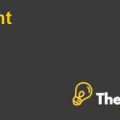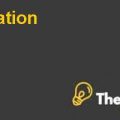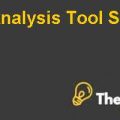Problem One:
Similarities between US GAAP and IFRS:
GAAP provides accounting principles to be used in US while in the UK THE IFRS are used to maintain the accounting data. The major similarity between both the accounting standards setting bodies is that both bodies uses same components of financial statements such as income statement, balance sheet and cash flow statement. Furthermore, both the standard setting board maintains the financial statements on accrual basis rather than cash basis. Moreover, GAAP and IFRS both uses prudent concept in preparing financial statements which means losses should have to be recorded when the entity expects the losses will occur and the profits should have to be recorded when they actually occur.
Differences between US GAAP and IFRS:
Apart from the above-mentioned similarities there are many differences as well between both US GAAP and IFRS which mainly includes the following. Firstly under the IFRS, the non-controlling interest is shown as a separate line item under the equity portion, however, under the US GAAP, non-controlling interest is shown as a separate line item under the liabilities portion. Furthermore, the bank overdraft can be shown in the operating activities in the statement of cash flows if it is used in cash management under the IFRS. As opposed to this, the bank overdraft is recorded under financing activities in the cash flow statement under the US GAAP. The major difference between the US GAAP and IFRS is that US GAAP is rule based while the IFRS is principle based approach.
Problem Two:
Average Borrowing rate:
The average borrowing rate of the Grant Company is 10.08%. Average borrowing rate is calculated by dividing the total interest payments by the total interest bearing debt, the total interest payments are calculated by multiplying the interest bearing debt with before tax cost of debt.
WACC:
WACC is the minimum return which the investors of the Grant requires, it is calculated by adding the weighted average cost of equity and weighted average cost of debt. The weighted average cost of equity is calculated by multiplying the cost of equity with weight of equity. And the weighted average cost of debt is calculated by multiplying the cost of debt with weight of debt. Book value of the interest bearing debt is assumed to be market value of debt which is used in calculating the weight of debt. The final WACC of the Grant Company is 8.73%.
Cost of Equity:
The cost of equity as per the dividend valuation model of the Grant is 6.28%. It can be said that cost of equity is lower as compare to the cost of equity under the CAPM method, this is mainly due to zero growth in the dividends. It is clearly mention that the current dividend will be paid in perpetuity. Had the dividend grow, the cost of equity is likely to increase.....................
This is just a sample partial work. Please place the order on the website to get your own originally done case solution.












